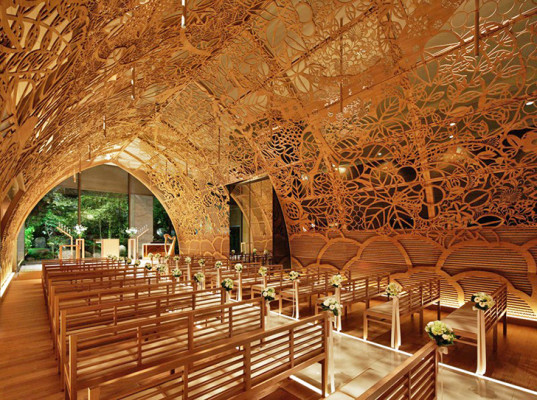One of the most ubiquitous and elegant objects ever made of Eastern White Pine is the Windsor Chair, a design refined by early American woodworkers in the 18th century. Inspired by a style that likely originated in Buckinghamshire, England in the 16th century, this American classic features chair spindles resembling the spokes of a wheel, and features a comfortable, deep-saddled seat.

We’ve seen artists and craftspeople create their own unique takes on the Windsor chair before, including a fun collection by designer Normal Kelley. Now we get a fun Japanese spin on the design in a collaboration called “The Windsor Department.” Created by three groups of designers (Taiji Fujimori, Inoda+Sveje and Drill Design), the collection is currently on display at ATELIER MUJI GINZA in Tokyo.

The designers first came together ten years ago to explore their fascination with Windsor chairs, which they describe as nostalgic and full of “mysterious charm.” To celebrate the anniversary of the collaboration, they’ve each produced their own modern forms of the chair, redesigning them for the present and future without losing what makes them so special and iconic.

“Nowadays, design tends to be understood as an activity to create something completely new,” say the designers. “The method of ‘The Windsor Department’ is to evolve the ‘original form’ of the chair with designers’ thoughts and experiments. It may allow us to think out of the box of conventional design, and guide us toward a more sustainable direction.”
Each of the ten participating designers has created their own chair. In most of them, the inspiration is overt; the classic Windsor spindles remain an integral part of the design. One stretches out the silhouette to grant it a longer back and lower profile. Another adds a single armrest. A third design leaves the top off the back of the chair, giving it a spiky appearance. Other reinterpretations simplify the basic shapes that go into the chair, making it a little bit more in line with minimal Japanese style.

The collection is a fun way to see how different artists can take a single piece of inspiration and turn it into something unique, and to explore how an old favorite can remain relevant for centuries to come.












